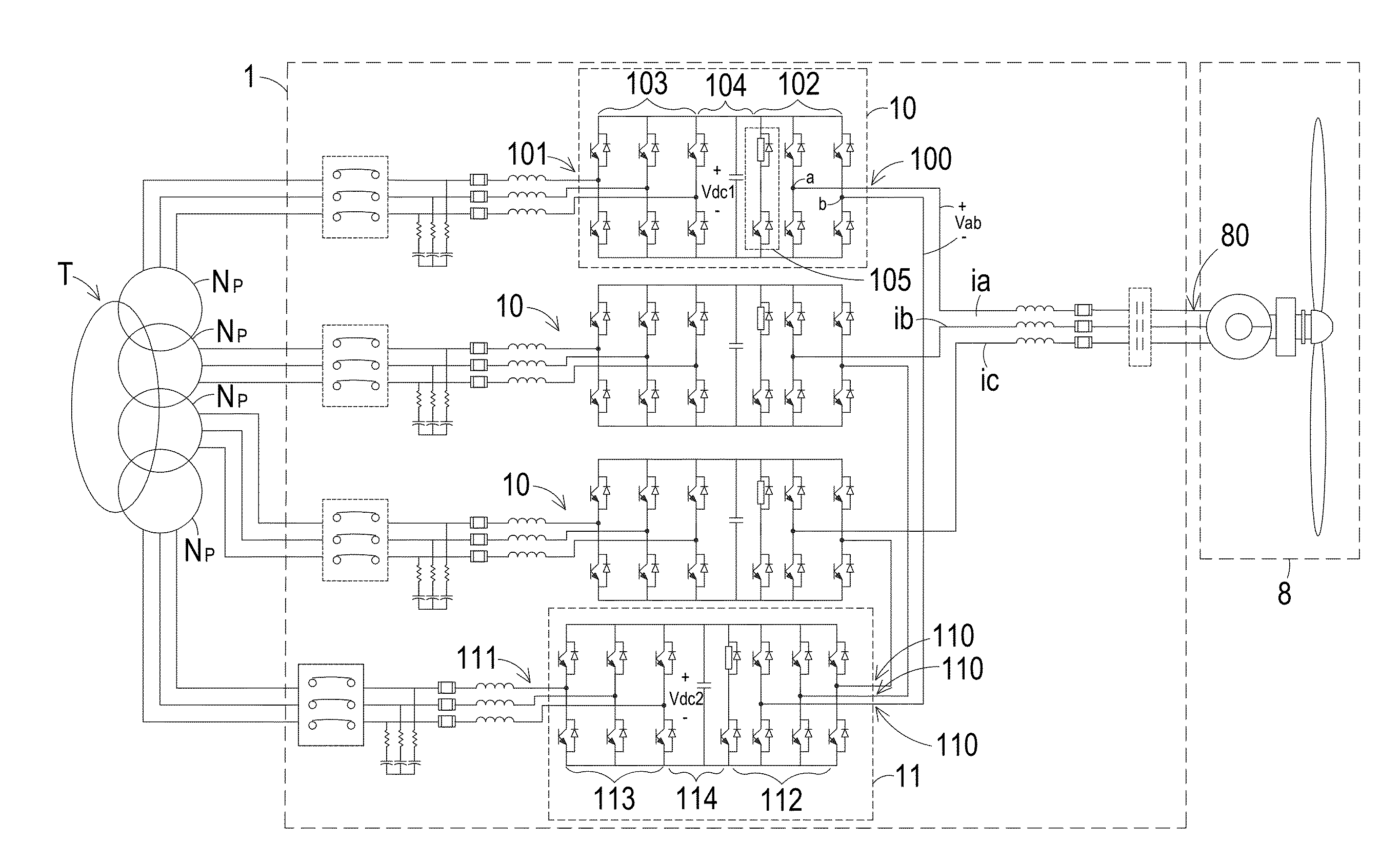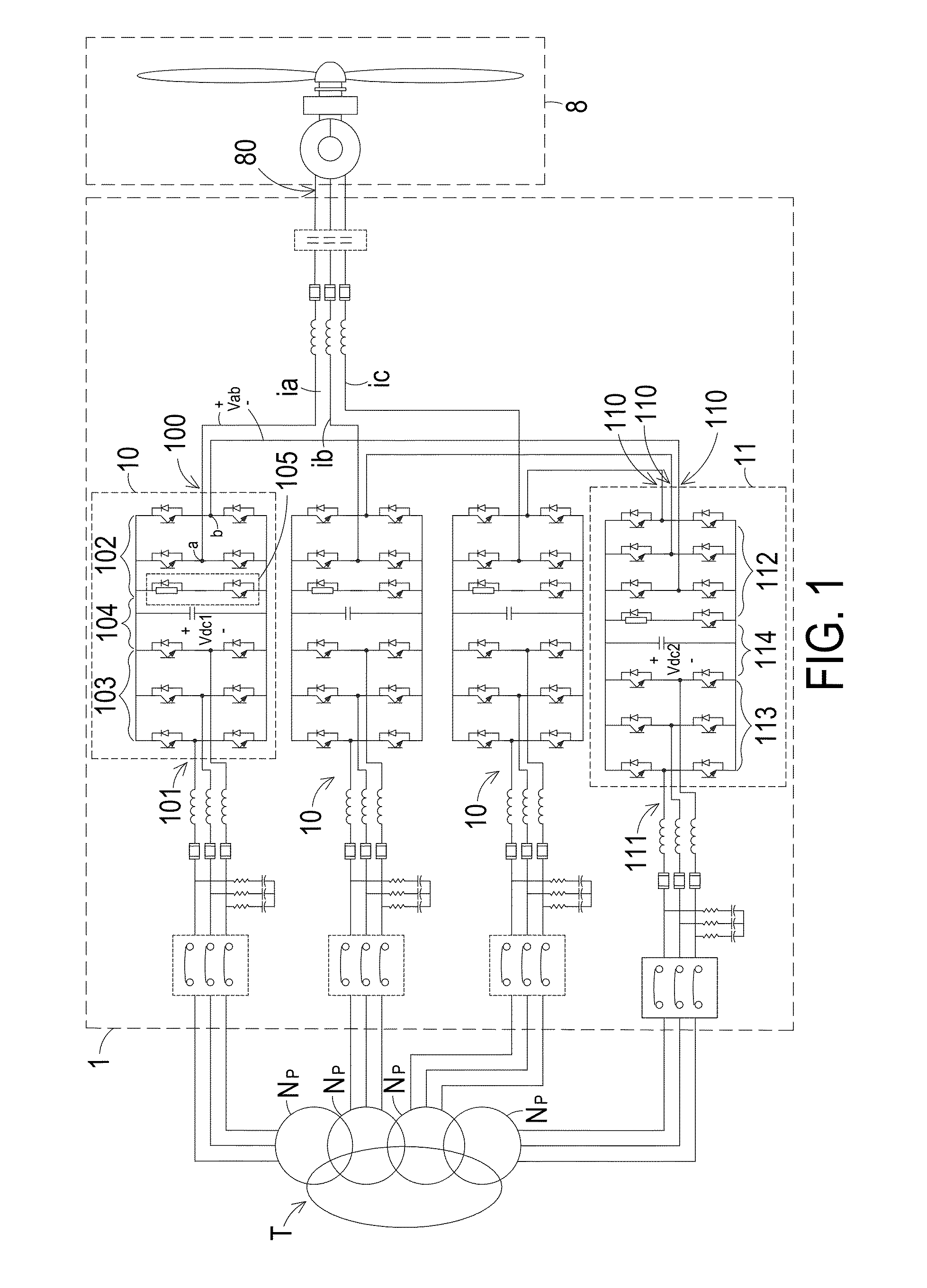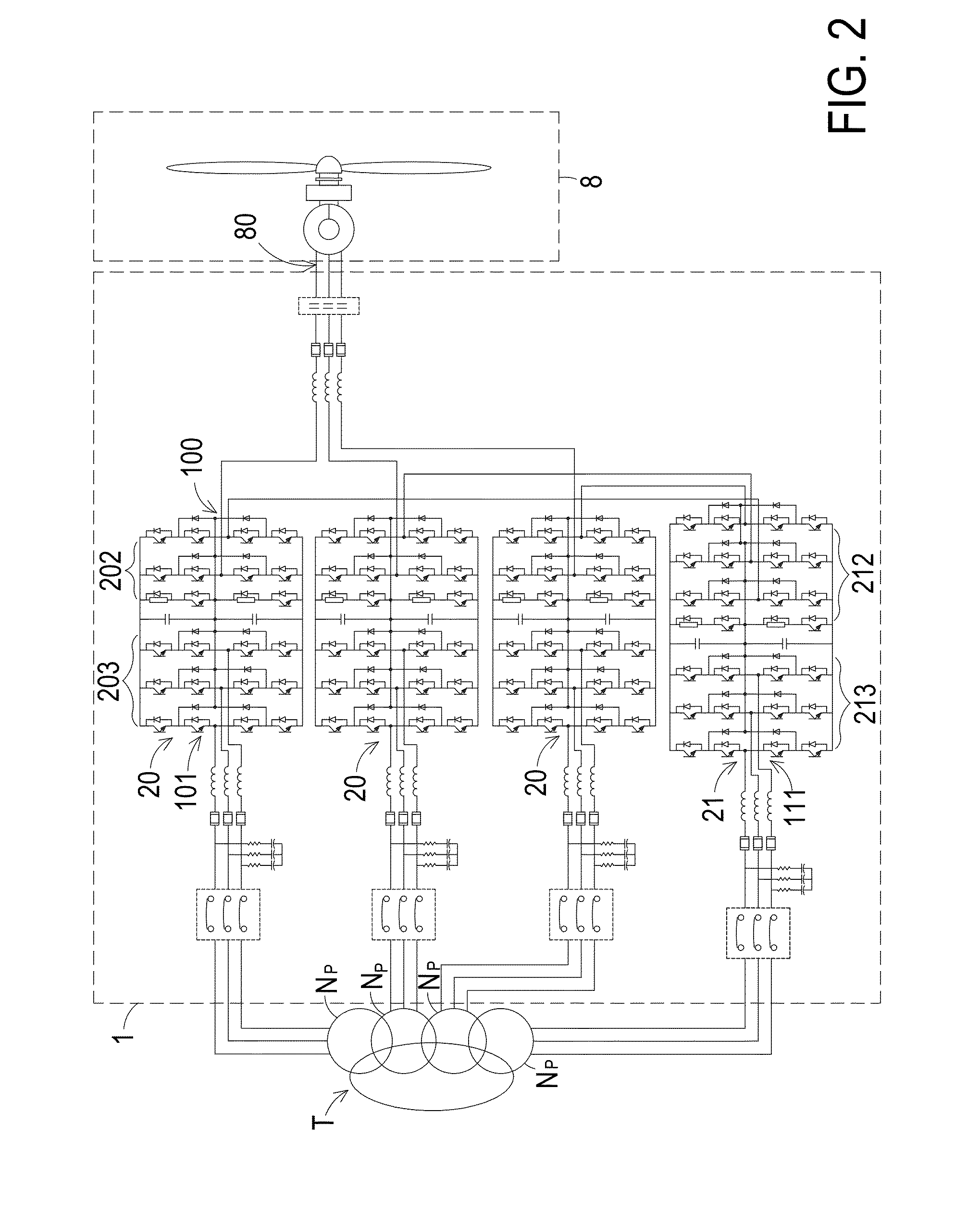Wind power conversion system
- Summary
- Abstract
- Description
- Claims
- Application Information
AI Technical Summary
Benefits of technology
Problems solved by technology
Method used
Image
Examples
first embodiment
[0025]FIG. 1 is a schematic circuit diagram of a wind power conversion system according to the present invention. As shown in FIG. 1, the wind power conversion system 1 is electrically connected between a wind power generator 8 and an isolating transformer T. A primary side of the isolating transformer T is electrically connected with an AC power network. In this embodiment, the AC power from the wind power generator 8 may be converted by the wind power conversion system 1 and then transmitted to the AC power network through the isolating transformer T. Optionally, the AC power received by the isolating transformer T may be converted by the wind power conversion system 1 and then transmitted to the wind power generator 8. In other words, the wind power conversion system 1 may convert and transmit the electric energy in a single direction or bilateral directions.
[0026]In this embodiment, the voltage levels of the wind power generator 8 and the AC power network are medium voltage leve...
second embodiment
[0035]FIG. 2 is a schematic circuit diagram of a wind power conversion system according to the present invention. In comparison with FIG. 1, the first converting circuit 20 of the wind power conversion system 1 of this embodiment has a three-level circuitry configuration. The first generator-side converter 202 of the first converting circuit 20 has a single-phase full-bridge three-level circuitry configuration, and the first network-side converter 203 of the first converting circuit 20 has a three-phase three-level circuitry configuration. In comparison with FIG. 1, the second converting circuit 21 of the wind power conversion system 1 of this embodiment has a three-level circuitry configuration. The second generator-side converter 212 of the second converting circuit 21 has a three-phase full-bridge three-level circuitry configuration, and the second network-side converter 213 of the second converting circuit 21 has a three-phase three-level circuitry configuration.
third embodiment
[0036]FIG. 3 is a schematic circuit diagram of a wind power conversion system according to the present invention. In the embodiment of FIG. 1, the second converting circuit 11 has the AC / DC / AC circuitry configuration. In this embodiment, the second converting circuit 31 is a two stage matrix converting circuit. Consequently, the second converting circuit 31 has an AC / AC circuitry configuration. In this embodiment, the second converting circuit 31 comprises a second generator-side converter 312 and a second network-side converter 313, but the second DC bus storage unit 114 of FIG. 1 is omitted.
PUM
 Login to View More
Login to View More Abstract
Description
Claims
Application Information
 Login to View More
Login to View More - R&D
- Intellectual Property
- Life Sciences
- Materials
- Tech Scout
- Unparalleled Data Quality
- Higher Quality Content
- 60% Fewer Hallucinations
Browse by: Latest US Patents, China's latest patents, Technical Efficacy Thesaurus, Application Domain, Technology Topic, Popular Technical Reports.
© 2025 PatSnap. All rights reserved.Legal|Privacy policy|Modern Slavery Act Transparency Statement|Sitemap|About US| Contact US: help@patsnap.com



